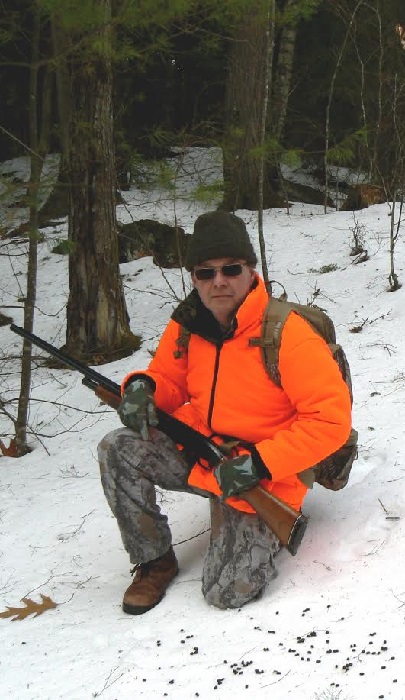
I am a hunter, pure and simple. Various members of my family have always hunted the forests and fields of New Hampshire for as long we can remember so any chance, I get to go out, I take it. With the turn of the year I found myself getting my license, not wanting any excuse not to venture out. It is a good thing that I did as one day later my friend Stan called me to ask if I would be up for a day of hare hunting. Of course I jumped at the opportunity and plans were made to head out the following Friday morning.
Snowshoe hare are the only game animal in town after the turn of the year for New Hampshire hunters. The only exceptions are some animals that they consider furbearers, like skunk, coyote, etc. Hare season runs from October 1 st to March 31 st . This season has to hold our state’s hunters until Spring turkey season.
Thursday night found me going over all of the equipment that I would be taking on this hunt. My top priority when hunting is safety, not only mine, but also that of the other people I share the woods with. Into my pack I carry water, emergency food, a first-aid kit, a map and compass, fire starting material, extra warm clothes and extra ammo. Some may say what I carry is over kill, but I won’t be one of those people we see in the news. I also double checked my shotgun and made sure that my license was in my wallet.
At 9:00 am Friday morning my friends picked me up and we proceeded to the area that we had decided to hunt (hare hunting). We saw signs of hare right off, along with those of turkey, deer, fox and coyote. With all this sign I had a real good feeling about this day. I knew that if we were able to bump a hare then it would end up in the game bag.
Upon entering the woods the three of us formed a line and started making our way through the spruce thicket. We positioned ourselves far enough apart as not to interfere with each other, but we stayed close enough to each the blaze orange that we were all wearing. The deeper into the woods we went, the more hare tracks I saw in the snow. I also saw more and more coyote tracks. All of these tracks told me a great deal. The coyotes were here because of the amount of hare in the area. Large numbers of hare meant that our chances would be good. The other part of the coyote presence would mean that the hare would probably less likely to bolt. They would probably hold tight, allowing their white fur to camouflage them, and hope that we just walk past. We had to move slow and quietly, which was easier said than done. The snow of a few days ago had crusted over. Every step we made sounded like we were walking across broken glass. Every hare within 10 miles must have known we were there.
There is a good reason why my Native ancestors didn’t hunt these animals. They would take them if they could while deer hunting, but they didn’t head out just to go after hare. The Native people would instead use snares and traps instead. Set up along known areas that were holding hare, these traps would be checked daily, along with their traps that were set for beaver, muskrat and other animals. We spent around four hours following trails through the woods and yet none of us fired a shot. The Native people and early colonists couldn’t afford to spend this much time or expend this much energy and have nothing to show for it. Today, most serious hare hunters use hounds which for obvious reasons will increase your odds.
Though we didn’t get any hare on this trip, we did gather a great deal of information for future hunts. We knew the hare were here, so we will be back. Deer sign in the form of tracks, droppings, urine and scrapes were everywhere. We also found what looked like a turkey highway, so you know where I will be come spring. This area was a hunter’s Mecca. While here on this day, we even tracked a porcupine to its den. Perhaps the very best thing of this trip was being able to spend a wonderful time in the woods with good friends. Anytime that you can spend the day outdoors is a good one, even if you don’t bring home any game.
By Dana Benner
